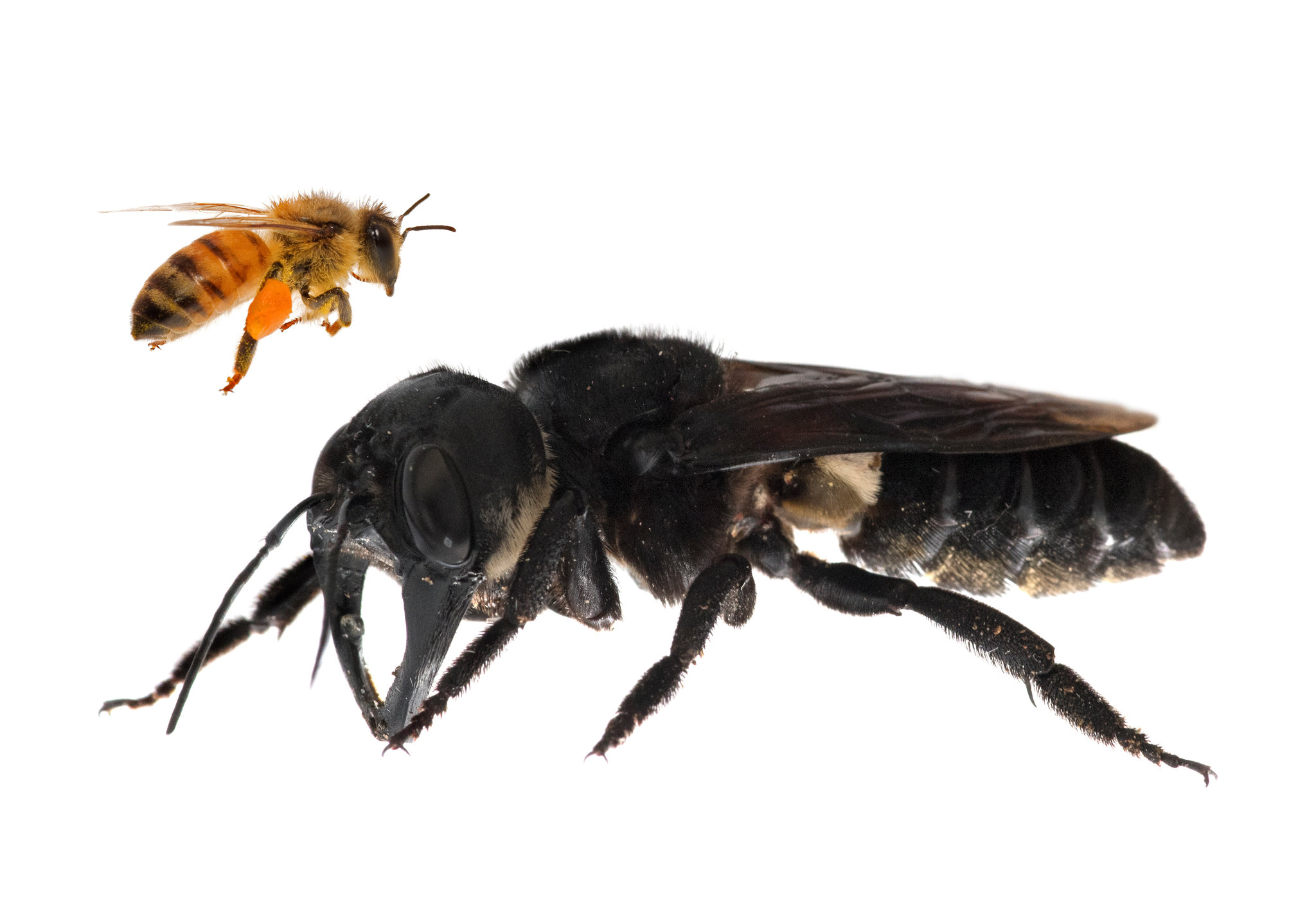
Image credit: Clay Bolt
The Wallace’s giant bee (Megachile pluto) belongs to Megachilidae, a family of mostly solitary bees.
The species was first discovered in 1859 by the British explorer and naturalist Alfred Russel Wallace, researchers could not locate it again, and it was presumed extinct.

During his stay on the Bacan Island of the Moluccas, Wallace observed and collected a giant female bee. He described it as ‘a large black wasp-like insect, with immense jaws like a stag-beetle.’
The Wallace’s giant bee was believed extinct until it was rediscovered in 1981 by the American researcher Adam Catton Messer. He searched and found it on three islands in Indonesia, on an archipelago called the North Moluccas.
After 1981, the Wallace’s giant bee was not observed in the wild for almost four decades.
As long as an adult thumb, with jaws like a stag beetle and four times larger than a honeybee, Wallace’s giant bee is not exactly inconspicuous.
But after going missing, feared extinct, for 38 years, the world’s largest bee has been rediscovered alive on the Indonesian islands of the North Moluccas living inside a termites’ nest in a tree, more than two metres off the ground by a team of American, Canadian and Australian biologists including nature photographer Clay Bolt.

